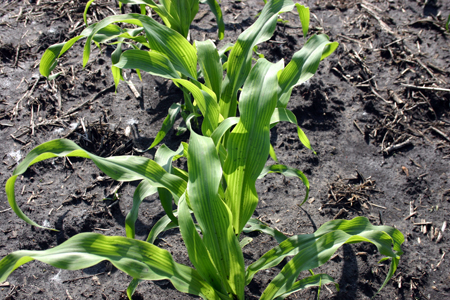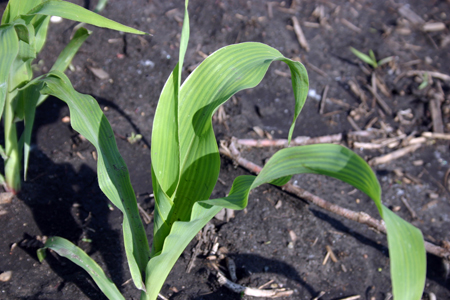Are you sure that yellowing means nitrogen deficiency?
Rain may have stolen some of your N, but a yellowing crop might indicate other deficiencies.
In most areas of Michigan, planting season has kicked into high gear. Since seeds are finally making their way into the ground, it might seem a bit pre-emptive to start talking about nitrogen and other nutrient deficiencies. However, with the larger amounts of rainfall at varying times during the spring season, the loss of applied nitrogen is on every grower’s mind and every grower’s eyes will be on their crops, scouting for deficiency symptoms.
To review, plants suffering from nitrogen deficiency tend to be pale yellow-green in color and have slow or stunted growth. Yellowing from lack of nitrogen starts at the older leaves and moves on to newer leaves as the deficiency continues with yellowing patterns varying by crop. Unfortunately for us, nitrogen isn’t the only nutrient that can cause yellowing of plant leaves. Potassium, sulfur, zinc, magnesium and iron deficiencies can all present themselves with yellowing plants and leaves, not to mention herbicide injuries. So before you assume the yellowing you see in your crop fields this spring is nitrogen deficiency, take the time to refresh your memory on what other deficiency or injury symptoms look like so you can make the right management decision.


Nitrogen deficiency? Think again. Manganese and other nutrient deficiencies can look very similar.
For more information on deficiency and injury symptoms, refer to Secondary and Micronutrients for Vegetable and Field Crops from Michigan State University Extension or to Nutrient Deficiencies and Application Injuries in Field Crops from Iowa State University Extension.



 Print
Print Email
Email




